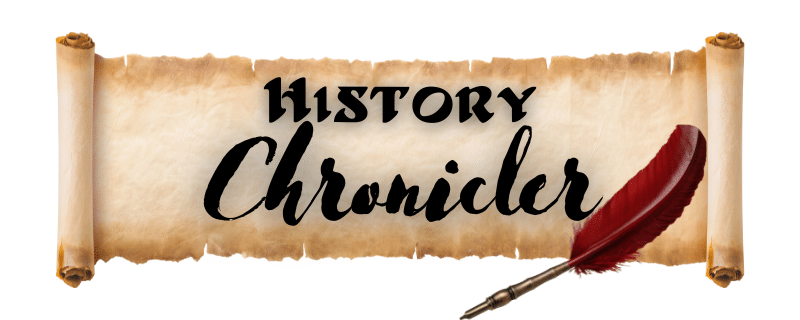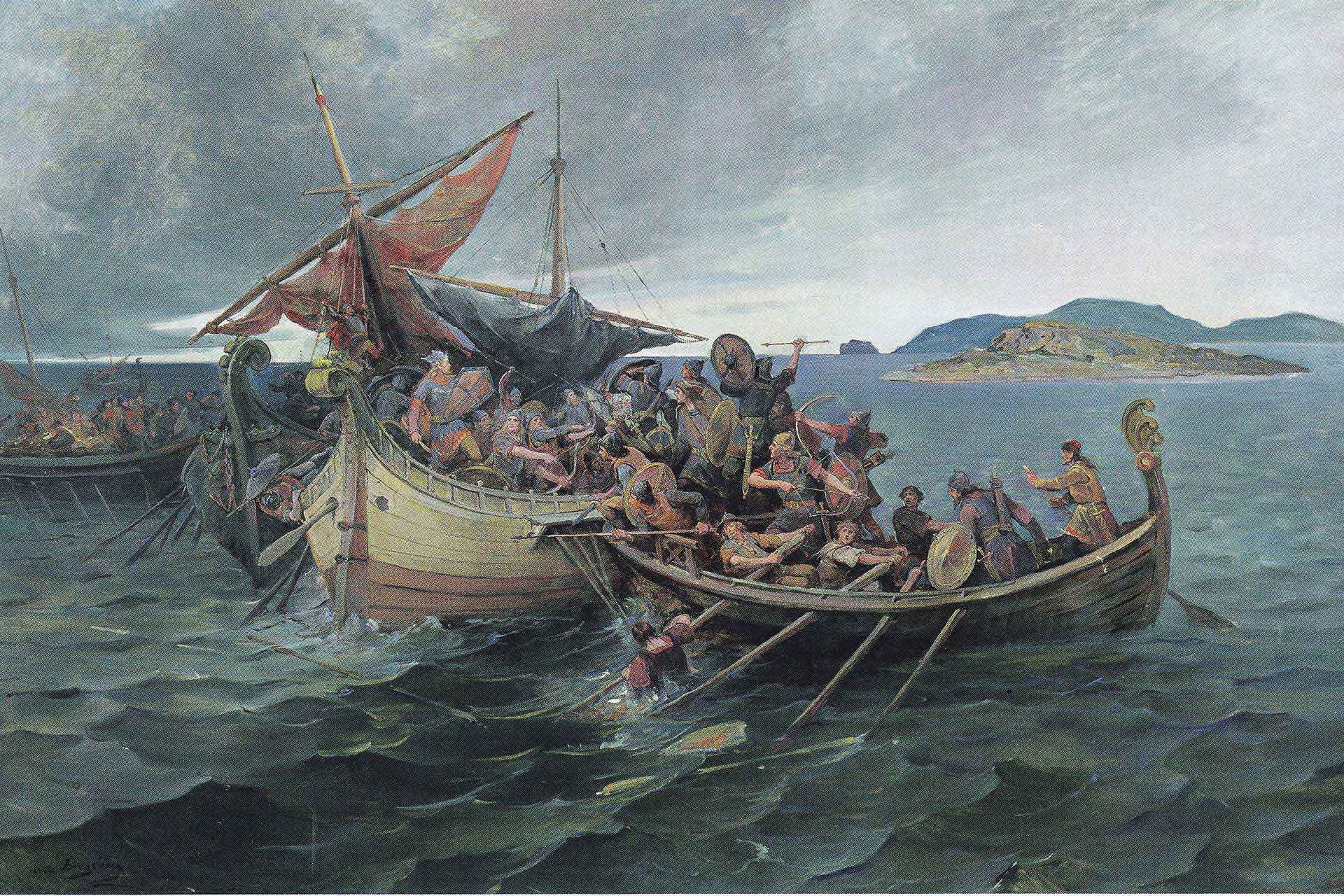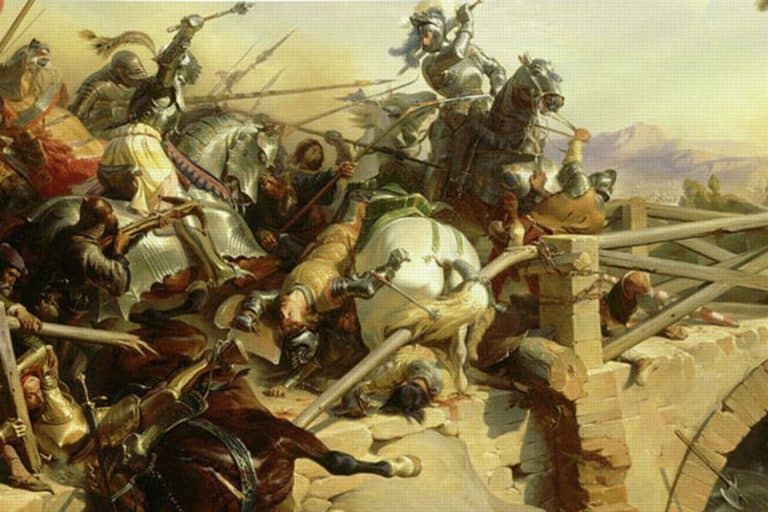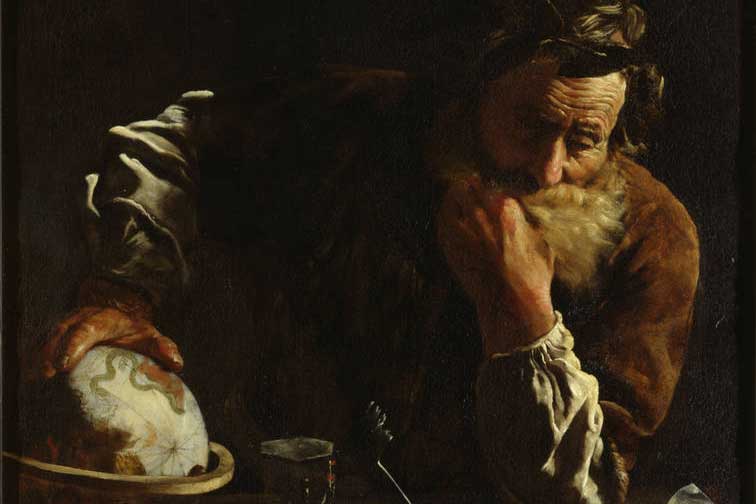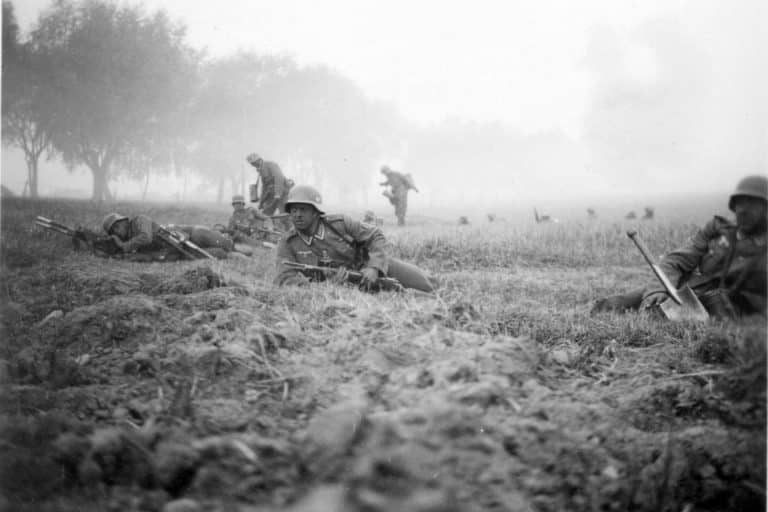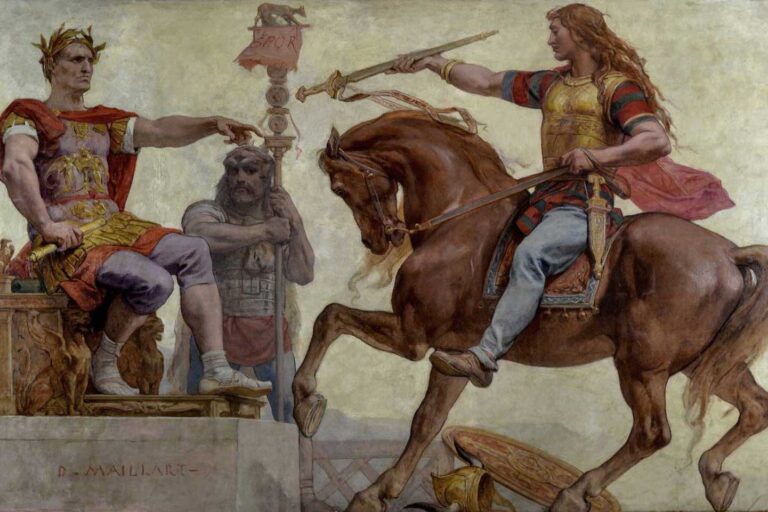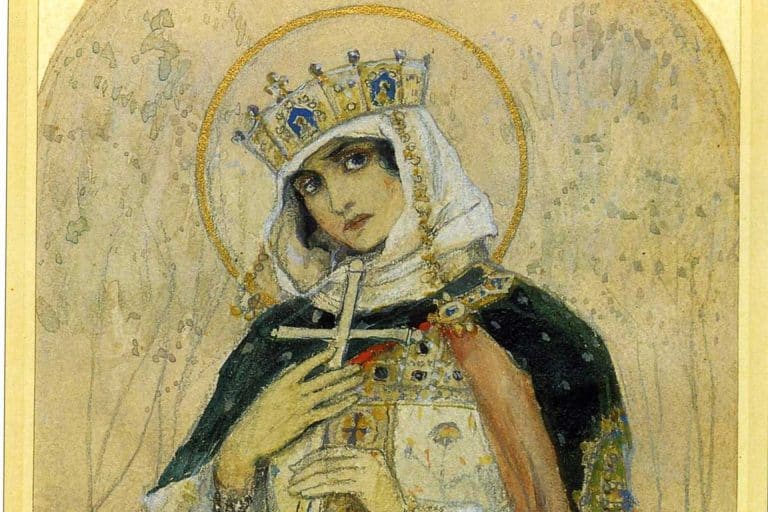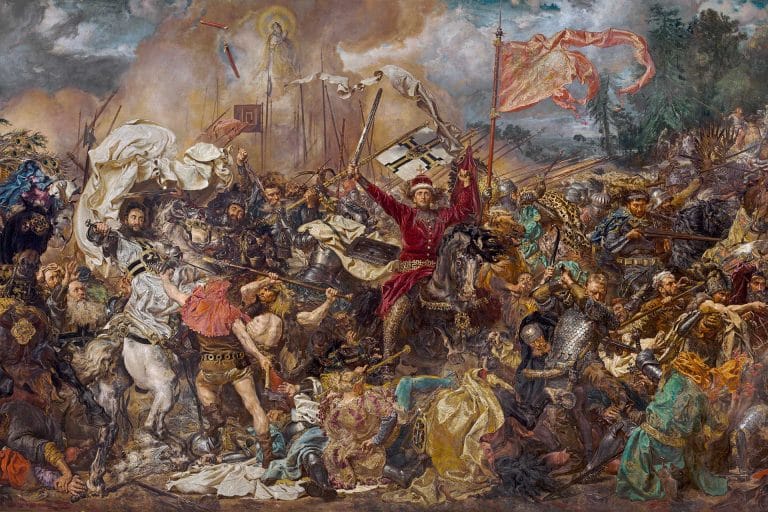Ragnar Lothbrok: The Man, The Viking, and his Lasting Legacy
Ragnar Lothbrok, or Lodbrok, is a legendary Norse hero and warrior, believed to be a composite of several real-life historical figures and a figure of Norse sagas. His name, “Lodbrok,” means “Hairy Breeches” in Old Norse, a moniker believed to be derived from a distinctive pair of pants he’s said to have worn. Here’s a summary of the early life of Ragnar Lothbrok based on sagas and other traditional sources:
Ragnar’s Parentage and Childhood
The birth and lineage of Ragnar Lothbrok have been subjects of much debate among historians and scholars. According to the sagas, he was the son of the Swedish king Sigurd Ring and a shieldmaiden named Lagertha, although other sources suggest different parentage. From his youth, Ragnar displayed a thirst for adventure and was destined to be a formidable warrior. His upbringing would have been typical of a Norse noble child, learning the arts of war, seafaring, and Norse legends from an early age.

Norstedts, Public domain, via Wikimedia Commons
Lagertha and the Early Expeditions
One of the most popular tales from Ragnar’s youth is his romance with Lagertha. The story goes that when Ragnar was a young man, he went to rescue a Norwegian town under threat from marauders. There, he met Lagertha, who fought valiantly by his side. Captivated by her courage and beauty, Ragnar fell deeply in love. Although their marriage was passionate, it was short-lived, and they soon parted ways. Despite their separation, Lagertha’s legend as a warrior in her own right continued to grow.
Ragnar’s “Hairy Breeches”
The origin of Ragnar’s epithet “Lodbrok” is rooted in another saga that speaks of his early prowess. The tale narrates Ragnar’s quest to win the heart of Thora, the daughter of a Norwegian king. To impress her, he was tasked with defeating a serpent guarding her home. Ragnar crafted a suit made of shaggy pelts, which he then boiled in pitch, letting it harden to form a protective, almost armor-like covering. This garment protected him from the serpent’s venomous bite, earning him his nickname “Lodbrok” or “Hairy Breeches”. After his triumph over the serpent, Thora and Ragnar married.

Ragnar’s Ascension to Kingship
According to the sagas, Ragnar’s rise to prominence and eventual kingship was a product of both his lineage and his personal feats. As the son of the Swedish king Sigurd Ring, he was of noble birth, granting him an inherent claim to leadership. Yet, it was his accomplishments as a young warrior, particularly his victory over a serpent guarding Thora (whom he later married), that solidified his legendary status. This feat, among others, reinforced his worthiness to rule, and he subsequently became a king, with his rule said to have spanned parts of Denmark and Sweden.
As a king, Ragnar Lothbrok was not just content with peaceful rule. He epitomized the Norse ideal of a warrior-king, leading numerous raids on territories far from his homeland. The sagas credit him with raiding France, and parts of England. These expeditions further cemented his legendary status, as he not only expanded his wealth but also showcased the might of the Norsemen to the broader world.

Ragnar Lothbrok’s English Expeditions & Impression on the English Population
The sagas recount that Ragnar Lothbrok targeted England as part of his broader Viking raids, which were not only driven by a thirst for wealth but also by political and personal motivations. The English coastline, with its rich monasteries and undefended settlements, was a tantalizing target for Viking raiders. Ragnar, embodying the spirit of the Viking Age, purportedly led numerous incursions into English territory.
The Vikings, under leaders like Ragnar, were both feared and marveled at. To the general English population, they were primarily a menace. The speed and ferocity of Viking raids, combined with their advanced seafaring abilities, made them nearly unpredictable and extremely formidable. Monasteries, the primary centers of learning and wealth, were especially vulnerable and often bore the brunt of Viking aggression. Places like Lindisfarne, famously raided in 793, became emblematic of the Viking threat. While Ragnar Lothbrok’s personal involvement in such raids is not historically attested, the sagas’ portrayal of him certainly fed the overarching narrative of the ruthless Viking raider.

The Vikings, under leaders like Ragnar, were both feared and marveled at. To the general English population, they were primarily a menace. The speed and ferocity of Viking raids, combined with their advanced seafaring abilities, made them nearly unpredictable and extremely formidable. Monasteries, the primary centers of learning and wealth, were especially vulnerable and often bore the brunt of Viking aggression. Places like Lindisfarne, famously raided in 793, became emblematic of the Viking threat. While Ragnar Lothbrok’s personal involvement in such raids is not historically attested, the sagas’ portrayal of him certainly fed the overarching narrative of the ruthless Viking raider.
As a result of these raids, the English developed a deep-seated fear of the Norsemen. Chroniclers of the time, primarily monks, described the Vikings with dread, often invoking religious language to depict these events as divine punishments for the sins of the English. The Anglo-Saxon Chronicle, a set of Old English annals, paints the Vikings as scourges sent by God.
Yet, alongside fear, there was a begrudging respect. The Viking warriors’ martial skills, seamanship, and tenacity were hard to ignore. As the Vikings began to settle in parts of England, there was an inevitable blending of cultures, leading to trade, intermarriage, and the eventual establishment of the Danelaw – regions of England under Norse rule.
While Ragnar Lothbrok’s individual raids on England are challenging to historically pinpoint, his legendary status represents the broader Viking impact on the English psyche during the Viking Age. The mix of dread and admiration the English felt towards Norse raiders like Ragnar underscores the profound effect the Vikings had on shaping England’s medieval landscape, both culturally and geopolitically. Ragnar’s legacy, whether wholly factual or partly mythical, reflects the tumultuous yet transformative Viking-English interactions during a pivotal era in European history.
Ragnar Lothbrok’s French Expeditions & the Sacking of Paris
The legendary Norse figure is often remembered for his audacious raids on the shores of France, especially the renowned siege of Paris. Although draped in a cloak of myth, his reputation as a fearless raider holds a firm place in historical narratives, capturing both admiration and fear.
In 845 AD, Paris, then under the rule of the West Frankish King Charles the Bald, witnessed a formidable Viking fleet navigate the Seine’s waters. According to certain accounts, Ragnar Lothbrok led this fleet, which consisted of around 120 ships filled with thousands of Norse warriors. The Vikings, known for their adept naval and raiding capabilities, caught Paris relatively unprepared. Political divisions and a lack of a standing army rendered the city vulnerable to external threats like the Viking raiders.
The Viking tactics were ingenious and relentless. They used the Seine to their advantage, bypassing significant fortifications and deploying strategies like the ‘turtle’ – a formation in which warriors used their shields overhead to protect themselves while advancing. Paris faced massive devastation: its religious sanctuaries were violated, treasures looted, and countless Parisians were either massacred or enslaved. The very heart of the Christian West was trembling under the Viking onslaught.

For the Parisians and the broader French populace, the Viking siege was nothing short of a nightmare. The grand city, a beacon of Christian and Carolingian prominence, was being desecrated by pagans from the North. The psychological impact was profound. The siege wasn’t just an attack on their city; it was an assault on their religious and cultural identity. This was further exacerbated when, to spare his city from complete destruction, King Charles the Bald agreed to pay Ragnar a substantial ransom, known as the ‘danegeld’. This act of paying off the invaders instead of repelling them was perceived by many as a humiliating submission.
The aftermath of the siege left an indelible mark on the collective psyche of the French. It underlined the need for stronger defenses and better-prepared cities. But more than just a military lesson, it became a cultural and historical touchstone. Over time, tales of the Viking raid, and Ragnar in particular, were recounted with a mix of horror and awe. The narratives painted Ragnar as a figure of both admiration, for his strategic genius, and dread, for his ruthless efficiency. The siege of Paris by the legendary Ragnar Lothbrok became a symbol of the vulnerability of even the mightiest cities when faced with determined invaders.
The End of the Legendary Viking King
Ragnar Lothbrok’s later life and the circumstances of his death are also shrouded in a mix of legend, folklore, and fragmented historical accounts. The tales vary, but a few common themes have found their way into the collective memory of his saga.
According to many Norse sagas, following his numerous conquests and the establishment of his reputation as one of the greatest Viking chieftains, Ragnar Lothbrok’s later life was marked by tensions among his sons. Each of them had become formidable leaders in their own right. However, the shared ambition to match or surpass their father’s legendary status drove wedges between them and even between Ragnar and some of his sons.
One of the most well-known tales concerns a failed raid on England, supposedly the result of impulsive decisions made by one of Ragnar’s sons. Jealous of his sons’ increasing victories and wanting to prove he still possessed his legendary prowess, Ragnar embarked on a poorly planned raid on Northumbria. His fleet was caught in a storm, and Ragnar was cast ashore and captured by King Ælla of Northumbria. The King, recognizing the legendary raider, decided on a gruesome form of execution to make a statement.
It’s said that Ragnar Lothbrok was thrown into a pit of venomous snakes. Facing this agonizing death, he was, according to legend, unyielding and defiant to the last. He supposedly recited a final poem, declaring that the heavens would roar with rage at his death and that his sons would exact revenge on Ælla. This stoicism in the face of death solidified his place as one of the most iconic figures in Viking lore.

Indeed, the tales of his sons’ vengeance, particularly Ivar the Boneless and Bjorn Ironside, are as riveting as those of Ragnar himself. They reportedly rallied their forces and returned to England to exact a bloody revenge on Ælla. According to some sagas, Ælla met a gruesome end, subjected to the ritualistic ‘Blood Eagle’ by Ivar.
The legends surrounding Ragnar’s death and the subsequent actions of his sons have been immortalized in countless sagas, poems, and modern retellings. While it’s challenging to discern fact from fiction, the tales of Ragnar Lothbrok, his storied life, and his legendary death serve as poignant reminders of the Viking spirit and their profound impact on the annals of European history.
Ragnar Lothbrok’s Historical References & Impact Today
Ragnar Lothbrok, the legendary Norse hero and warrior, occupies a fascinating position in the annals of history, straddling the line between myth and reality. His presence in historical records is sparse and often mired in ambiguity, with tales of his exploits primarily preserved in sagas, skaldic poetry, and other Old Norse sources. While the authenticity of these events remains the subject of scholarly debate, Ragnar’s presence has undoubtedly left an indelible mark on both historical documentation and the cultural imagination.
The earliest accounts of Ragnar can be traced back to Old Norse sagas like the “Ragnarssona þáttr” (Tale of Ragnar’s Sons) and the “Sögubrot” (Fragmentary Saga). These sagas recount his legendary adventures, from his marriage to the shieldmaiden Lagertha to his fateful encounter with the serpent Jormungandr. Another key source, Saxo Grammaticus’ “Gesta Danorum” (Deeds of the Danes), paints Ragnar in a somewhat different light, combining his persona with other historical figures and presenting a more euhemerized version of the Viking chieftain. While these accounts provide a rich tapestry of Ragnar’s purported adventures, their varied nature makes it difficult to ascertain which, if any, events are rooted in historical fact.
Regardless of historical accuracy, the legend of Ragnar Lothbrok continued to grow. His image became a symbol of Norse courage, cunning, and exploration spirit. The tales of his raids, particularly on Francia and England, exemplified the Viking Age’s audacity and its expansive geographical reach.

Fast forward to modern times, and Ragnar’s legend has undergone a renaissance, primarily due to pop culture’s embrace. The critically acclaimed television series “Vikings,” introduced a new generation to the saga of Ragnar Lothbrok. Portrayed by Travis Fimmel, Ragnar’s character, though dramatized for television, drew heavily from both historical texts and sagas. The show’s immense popularity has revitalized interest in Viking history and Norse mythology, inspiring books, documentaries, and even spurring tourism to historical Viking sites.
Beyond television, Ragnar and his exploits have found their way into video games, novels, and even music. His legacy as the quintessential Viking, combined with a modern fascination for all things Norse, ensures that Ragnar Lothbrok remains an iconic figure, bridging ancient legends with contemporary entertainment. The enduring allure of Ragnar, whether as a historical figure or a mythical hero, testifies to the timeless appeal of the Viking spirit and the tales that arose from the fjords and shores of Scandinavia.
Fast forward to modern times, and Ragnar’s legend has undergone a renaissance, primarily due to pop culture’s embrace. The critically acclaimed television series “Vikings,” introduced a new generation to the saga of Ragnar Lothbrok. Portrayed by Travis Fimmel, Ragnar’s character, though dramatized for television, drew heavily from both historical texts and sagas. The show’s immense popularity has revitalized interest in Viking history and Norse mythology, inspiring books, documentaries, and even spurring tourism to historical Viking sites.
Beyond television, Ragnar and his exploits have found their way into video games, novels, and even music. His legacy as the quintessential Viking, combined with a modern fascination for all things Norse, ensures that Ragnar Lothbrok remains an iconic figure, bridging ancient legends with contemporary entertainment. The enduring allure of Ragnar, whether as a historical figure or a mythical hero, testifies to the timeless appeal of the Viking spirit and the tales that arose from the fjords and shores of Scandinavia.
